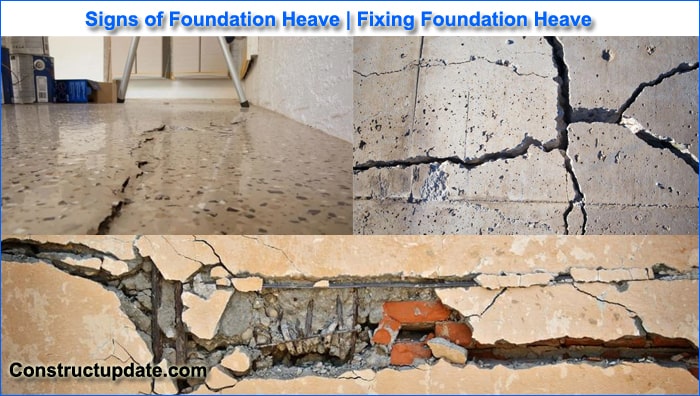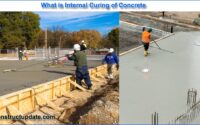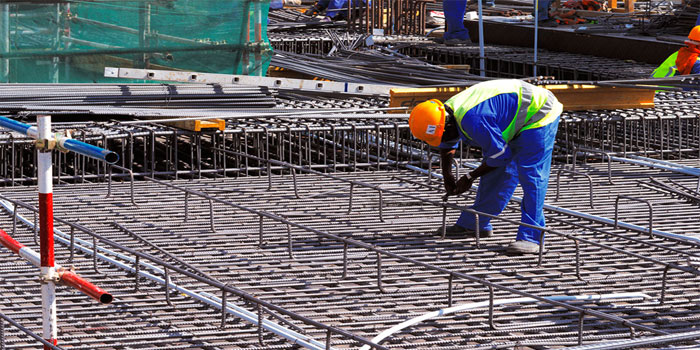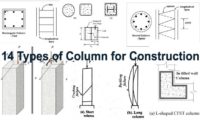Signs of Foundation Heave | What Causes Foundation Heave | Fixing Foundation Heave
For a mortgagee, a foundation heave can be a particularly distressing event since it causes unsightly wall fissures, immovable doors, and a triangle that emerges from your garage slab, resembling a half-formed pentagram from hell.
Or perhaps there is a strange tumour covered in hair in the middle of your living room, creating a trip hazard for poor G-ma.
The fact of the issue is that foundation heave can be unsightly, obstructive, and, worst of all, dangerous to your home’s structural stability.

What Causes Foundation Heave?
The dirt beneath your home is where foundation heave begins, like other fundamental problems. However, just as heavier properties are more likely to undergo settlement, lighter properties and residences with a thinner foundation are more prone to foundation heave. The most frequent reasons for ground swelling, which causes heave, are:
Stress Relief
Stress relief, also known as overburden recovery, is typically caused by the removal of soil from an excavation, which releases pressure on the strata below. The soil may swell or heave upward as a result of this.
Soil Saturation
Lack of drainage is one factor that can contribute to soil saturation, but there are several more. Soil saturation and foundation heave may be brought on by flash floods, water table changes, or underground water sources.
Lack of Drainage
One of the most serious issues that can result from improper yard drainage is the soil under your foundation becoming unstable. For homes that are heavier, this may result in sinking, while for those that are lighter, the soil’s expansion may pull the foundation upward and result in damage.
Snap Freezes
Foundation heave can also result from abrupt weather changes. A sudden freeze, for instance, might cause the ground to expand and put pressure on your foundation by causing the water in the soil to freeze.
What are the Signs of Foundation Heave?
Some of the signs observed before a foundation heave are:
- Fissures with at least two intersecting cracks that resemble spider webs or chicken feet. A triangle-shaped intersection of cracks forms where the most heaving has occurred.
- Construction-related or post-construction foundation heave damage to concrete that worsens a few years after completion.
- A year or two after the first signs of distress are seen, the surrounding trees begin to die or fall.
- Driveways, patios, and garage slabs are examples of flatwork that projects upward and away from the base.
- Water leakage has been noticed from pools or ponds close to the structure as well as plumbing under the slab.
- The higher soil layer beneath the foundation has more moisture in it now. More than 25 can be found in the soil plasticity index.
- It is simple to explore the ground beneath the perimeter beam.
- The in-ground pool close to the building is uneven.
- The building’s construction site drains in a way that slopes toward the foundation.
- Wet, muddy soil is discovered in the first few metres below the perimeter grade beam during excavation around the foundation.
- Grade beams, piers, or foundation repair shims have loose gaps between them.
- The nearby soil at grade and the perimeter grade beam are flush.
- For a comparatively little amount of level distortion in the foundation, the damage to the superstructure and foundation is substantial.
- Damage to the flooring components on the ground floor.
- Between grade beams, slabs are bowed, and the grade beams are attached to piers built far below the active zone.
- Emergence of cracks in drywall, frequently zigzagging brickwork, tops of doorframes, and top and bottoms of window frames. Over time, these fissures will lengthen and thicken.
- Due to persistent upward pressure on the base, which is transferred to a framework, the frames of windows and doors become out of square and become sticky.
Fixing Foundation Heave
As with any foundation problem, repairing the foundation heave requires two steps. The root of the foundation heave must be eliminated first. If you want your home to be able to withstand the upward pressure, you’ll need to either lessen the upward pressure, remove surplus water from the soil beneath it, or strengthen the foundation.
Typical remedies include
Yard Grading
Inadequately sloped yards can effectively funnel water toward your house and foundation rather than away from them. Changing the grade of your yard might significantly improve this if the soil beneath your property is saturated or becomes saturated after a particularly strong downpour.
Interior Drains
To collect water that seeps into your basement’s walls, floor, or cove, interior drains can be installed at ground level. When these drains catch this water, they divert it to a sump pump where it can be securely removed to keep your foundation and basement dry.
Sump Pump Installation or Updating
A modern type that can efficiently pump water away from your foundation and toward the street where it may be effectively drained should be installed if you don’t already have one or your current model isn’t operating properly.
You may start repairing the damage the foundation heave caused once the root cause has been located and dealt with. Typical remedies include:
Helical Piers
It is possible to install helical piers, which are steel shafts with a succession of low-pitched helical plates, to level out foundations that are projecting or bulging as a result of foundation heave damage. They may effectively repair the bulges and protrusions caused by foundation heave since they are simple to install, adaptable, and durable.
Concrete Patches
Concrete patches can be used to correct the appearance of cracks in your basement floor and restore visual integrity after your foundation and floor have been evened out and restored. Naturally, this should be the final remedy used because if concrete patches are used before the helical piles are built, they will simply shatter during repair if there is still moisture in the gaps.
As you can see, repairing foundation heave is a difficult but doable process. All you require is an expert in foundation repair.





